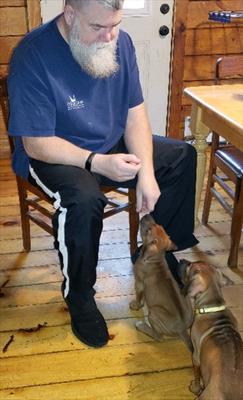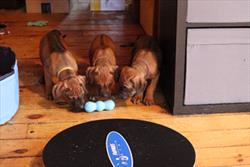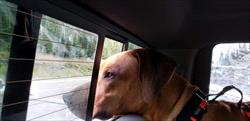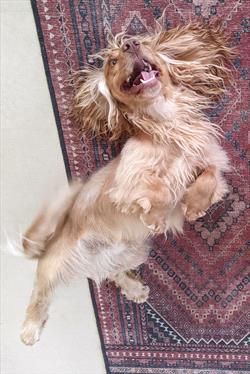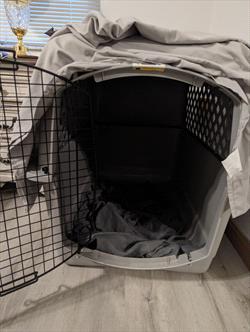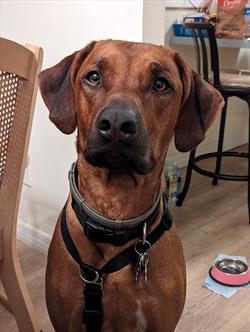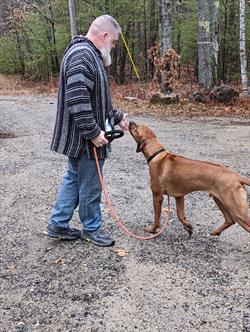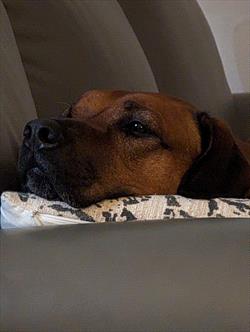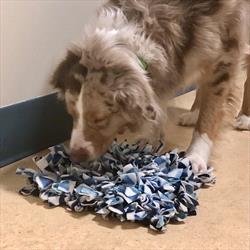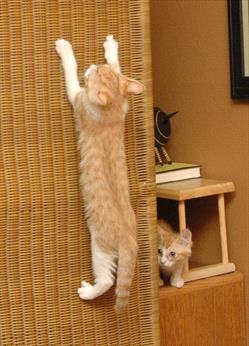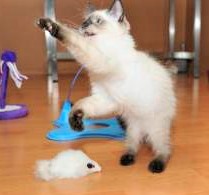The veterinary hospital can be a scary environment for puppies. Everything from the waiting room full of people and animals to handling and restraint during physical exams can be overwhelming. Vaccinations are unexpected and often painful, and stepping on the scale results in panic. It doesn’t have to be this way. With a little bit of preparation at home, you can make veterinary visits low stress.
Early Socialization
The ideal age to purchase or adopt a puppy is somewhere between eight and ten weeks of age. This gives ample time for your puppy to adjust to their new environment and form relationships with people, dogs, and other animals that share their home. If adopted later in life, puppies will still have opportunities for socialization; however, the process may take longer or never happen at all.
During the socialization period, puppies need a variety of good experiences however, the quality rather than quantity of these experiences is important. Interactions should never be forced, and the puppy should be closely monitored to make sure they are having fun and want to interact. Food and play are great ways to keep a puppy engaged while positive associations are developing in their mind.
Socialization with Other Dogs
Dogs are not born instinctively knowing how to “speak dog.” Puppies learn this critical skill through interactions with their mother, littermates, and other dogs living in the home. Giving your puppy opportunities to interact with dogs of all ages, shapes, and sizes will help them master these skills into adulthood. During these interactions, direct supervision is a must. Adult humans should be on hand to make sure all dogs continue to have fun, and frequent play breaks are taken when needed. Dog parks are not an ideal place to learn these skills therefore, “play dates” should only take place with other dogs that are up to date on their vaccines and know how to play politely with other dogs.
Socialization Classes
Puppy socialization classes, or “Puppy Kindergarten”, provide a great opportunity to socialize your dog in a safe environment. Puppies in these classes are often similar in age, and their vaccine status is known. Classes offered at veterinary hospitals, training facilities, or local shelters will have strict sanitation protocols in place to reduce the spread of disease and keep your puppy safe and healthy.
When taught by a trained professional, these classes often provide enriched environments full of fun toys that make noise, objects to explore, different surfaces to walk on, and people to interact with. A family affair, children are often encouraged to attend and interact with the dogs while supervised. Basic social skills are introduced, and house-training strategies are discussed. Learning about “normal” puppy behaviors while troubleshooting solutions to common nuisance-type behaviors like play biting, jumping, and nipping is included. Overall, these classes are a great way to learn from professionals and socialize your puppy at the same time.
|
Photo Courtesy of Christine Calder, DVM, DACVB
|
Handling Exercises
Handling your puppy’s feet, legs, individual toes, and nails while rewarding constantly using high-value treats can help prepare your puppy for future veterinary exams, nail trims, and grooming procedures. The same is true for touching their mouth and ears. When doing these exercises, it is important to constantly monitor your dog to make sure they are not stressed by these interactions. Never force your dog to accept your touch, and always give them a choice to walk away when they are uncomfortable or not willing to participate.
Teaching Choice and Problem-Solving Skills
When young, it is impossible to expose your dog to everything they may encounter later in life. Teaching your puppy critical problem-solving skills is important. Food dispensing and puzzle toys are a great way the engage your dog’s brain, build confidence, and teach independence from you. These tools reduce destructive behaviors and help your dog remain calm and quiet while you watch television, take a phone call, or are stuck on a zoom call. They also reduce frustration and help your dog work through problems they may encounter later in life.
Training is another way to encourage your dog to use problem-solving skills while building strong relationships with their humans. Positive reinforcement training improves communication between you and your dogs. Learned behaviors such as touch, chin rest, go to a mat, and stationing on side and front feet up on a platform are all behaviors that encourage choice and are the basic foundations for cooperative veterinary and husbandry care.
|
Photo Courtesy of Christine Calder, DVM, DACVB
|
The Car Ride
Car rides can be scary for puppies, and many will get carsick. Taking your puppy for short frequent rides can be helpful to acclimate your puppy to the car. Treats given at drive-thru windows and rides that end at fun places are all ways to help your puppy associate the car with something fun and exciting. If your puppy does get car sick, talking with your veterinarian about anti-nausea medication can help make the ride more pleasant for you and your puppy.
|
Photo Courtesy of Christine Calder, DVM, DACVB
|
Putting it all Together: The Veterinary Hospital
Veterinary visits will never be free of fear but preparing your puppy using the techniques and strategies listed above will make these visits less stressful for all. Dogs that are comfortable riding in cars and have been well-socialized as puppies are less likely to become overwhelmed, anxious, and fearful when arriving at the hospital and entering a crowded waiting room. Due to the positive associations your dog has now formed, handling and restraint by the veterinary team will result in a calm and relaxed dog instead of hiding, trembling, growling, or trying to bite.
Consent for procedures such as blood draws is freely given because your dog knows what touch and chin rest mean, which makes it easy to position your dog without force. Bringing snuffle mats, licking mats, and frozen feeders from home can be used to encourage your dog to willingly step on the scale, sniff and explore the exam room, and provide distractions when needed during the physical exam and vaccination process.

